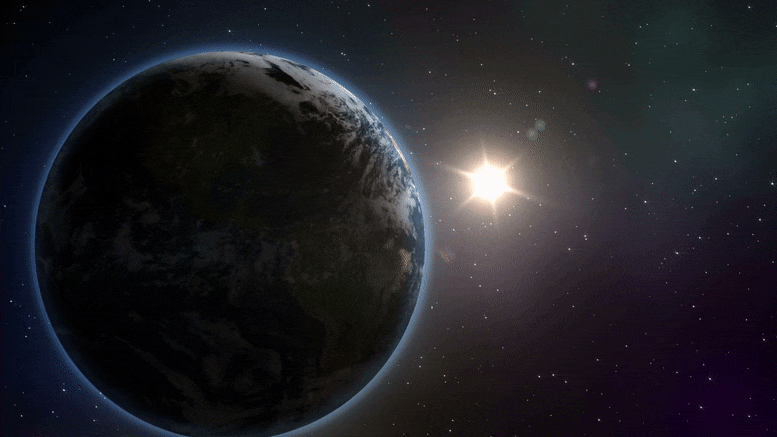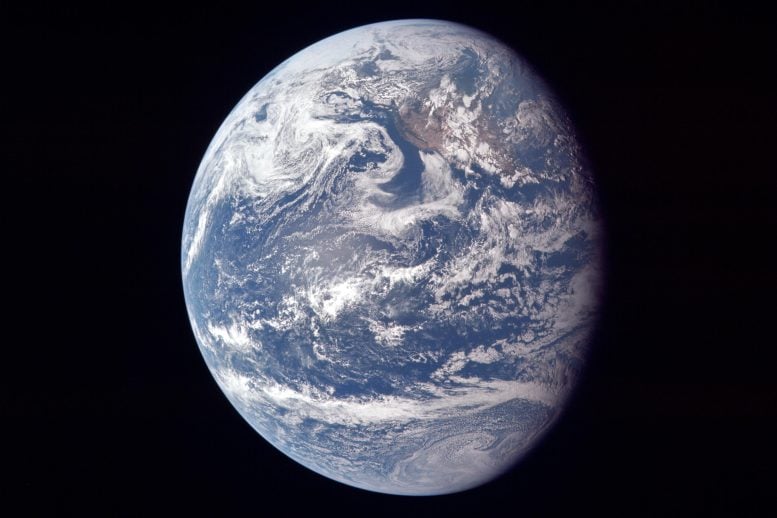Is Earth an Oddball? One of the Strangest Things in the Cosmos Might Be – Us

How rare in the galaxy are rocky planets like Earth in similar orbits around Sun-like stars? The question turns out to be surprisingly difficult to answer.
One of the strangest things in the cosmos might be – us.
Among the thousands of planets confirmed to be in orbit around other stars, we’ve found nothing quite like our home planet. Other planets in Earth’s size range? Sure, by the bushel. But also orbiting a star like our Sun, at a comparable distance? So far it’s just one, lonely example. The one beneath our feet.
A big part of this is likely to be the technical difficulty of finding a sister planet. Our telescopes, in space and on the ground, find planets around other stars by two main methods: wobbles and shadows.
The “wobble” method, or radial velocity, traces the subtle back-and-forth motion as orbiting planets tug their star this way, then that, because of gravity. The larger the tug, the “heavier” the planet — that is, the greater its mass.
In the search for shadows, planet-hunting telescopes wait for a tiny dip in starlight as a planet crosses the face of its star — a crossing known as a “transit.” The bigger the dip, the wider the planet.
In both cases, large planets are much easier to detect than small ones. And in the case of transits, small, rocky planets about the size of Earth show up much better against very small stars known as red dwarfs. In a sense, they cast a bigger shadow that blots out proportionally more of a small star’s light, so instruments like NASA’s TESS space telescope can more readily find them. A Sun-sized star won’t dim as much when an Earth-size planet passes by, making their transits harder to detect.
And there’s another troubling issue: time. A planet orbiting a star at Earth’s distance from the Sun would take about 365 days to make one revolution – just like our planet’s “year.” But to confirm such an orbit, your telescope would have to stare at that star for, say, 365 days to catch even one transit — and to be sure it’s truly a planet, you’ll want to see at least two or three of these transit signals.
All of these difficulties have placed such planets largely out of reach for today’s instruments. We’ve found plenty of small, rocky planets, but they’re nearly all orbiting red dwarf stars.
In our galaxy, red dwarfs are far more common than larger yellow stars like our Sun. That still leaves room for billions of Sun-like stars and, maybe, a significant number of habitable, Earth-sized worlds circling them.
Or maybe not.
Rare or just difficult?
The apparent oddness of our home system doesn’t end with Earth. Our particular arrangement – small, rocky worlds in the nearest orbits, big gas giants farther out – also is something we haven’t yet detected in close parallel anywhere else. Whether this is because they are truly scarce or because they are hard to detect is unclear.
Jupiter takes one trip around the Sun every 12 years. But Jupiter-type planets in long orbits are comparatively rare around other stars, and that could be important. Theorists say Jupiter might well have cleared the way for Earth to become a habitable world, quite literally. The giant planet’s intense gravity could have hoovered up small rocky bits that might otherwise have smashed into Earth, sterilizing it just as life was getting its start.
“The planetary systems we are finding do not look like our solar system,” said Jessie Christiansen, a research scientist at NASA’s Exoplanet Science Institute. “Is it important that our solar system is different? We don’t know yet.”
Christiansen, who studies exoplanet demographics, does not think “Earths” will turn out to be rare, but says scientific literature on the question “is all over the place.”
Far more data are needed, scientists tell us, to determine the frequency of planets similar to Earth in both size and circumstance.
Future space telescopes could examine the atmospheres of distant, rocky worlds for signs of oxygen, methane, or carbon dioxide – in other words, an atmosphere that reminds us of home.
For now, we remain in the dark. Earth-like planets around Sun-like stars might be plentiful. Or, they could be the true oddballs of the galaxy.

No comments:
Post a Comment